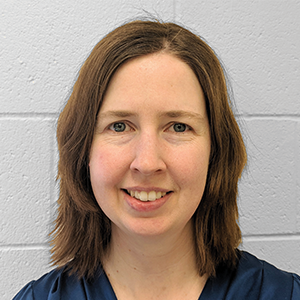
Making the leap from academia to industry
After many years in academia, in 2021 I became a principal scientist at a small biotech startup, Umoja Biopharma. Since then, multiple postdocs and even professors have asked me: How did you make it happen?
While everyone’s journey is different, I found certain strategies to be useful for making the leap — and later discovered approaches I wish I’d known about sooner. Here, I share some of these.

Why make the leap?
Primarily, I wanted to help produce a clinical product that would have a positive, meaningful impact on patients’ lives. Because my mother-in-law died from breast cancer in 2014, I was particularly interested in cancer therapeutics.
Like many academics, I also felt underpaid. And industry does typically pay more; according to a life sciences salary survey in The Scientist, industry scientists make about 30% more than their academic peers. (And if this motivates you, don’t feel ashamed; you’re not alone. A LinkedIn hiring survey found compensation to be the most common important factor for accepting a job.)
Identifying these two reasons through honest self-reflection helped me stay motivated during the job hunt, fueled me with a genuine interest in different companies’ research (what they call “pipelines”), and enabled me to give sincere, passionate, meaningful answers to job interview questions.
From CV to résumé
Like most scientists who have spent years in academia, I had become attached to my CV and did not relish reducing it to a one- or even two-page résumé, but I recognized this was necessary for leaping. It was more challenging than I thought it would be and took weeks of revisions. I reviewed examples and resources online. I was also grateful that some industry friends kindly looked over my initial (cringe-worthy) drafts and did not hold back in their detailed feedback.
There are many ways to create a résumé; section by section, I found the following to be helpful:
- Objective: Self-reflection helped me create a short summary of my key skills/experience and current position, and a sentence describing what type of position I sought, at the top of my résumé. Example: “Seeking leadership position developing innovative therapeutic products.” Tip: You don’t need to know where you want to be in 5 to 10 years; just the next step is good enough for now.
- Experience: I broke the wall of text for each paid professional position in my CV(including postdocs) into bullet points focusing on my most relevant skills/experiences, including quantifiable achievements. Example of one point from a position: “Developed and delivered nine iPSC culture workshops; 61 trainees, 4 in industry.”
- Education (yup, no longer at the top!): For any research projects (in graduate student and postdoc positions), I included a brief descriptive summary.
- Leadership Skills (optional): Because I was looking for a managerial position, I included mentoring, project management, communication skills/presentations, collaborations managed, and team building/leadership workshops.
- Technical Skills: I also applied for lab positions, so I listed general and specialized techniques such as Western blot and RNA-Seq.
- Selected Publications (optional): I summarized my citation information and listed a few of the most relevant (or impressive) publications with a Google Scholar link to the rest.
While it’s easy to reuse one résumé for every job, I found it’s worth the 5 to 10 minutes to customize it for each. I’d reread the job posting and usually tweak my Objective, Experience and Technical Skills sections to ensure they were as relevant as possible and included any keywords a busy hiring manager might quickly search for.
Industry wants good team players — teamwork is crucial — so I worked to highlight experiences where I’d worked in a team. Examples: led collaborations, managed/mentored others, developed communication skills. Demonstrating I have a growth mindset — I’m willing to learn, adapt and try new things — was helpful too. When preparing for an interview, I kept all this in mind as part of my story.
Embracing LinkedIn (and other networking tips)
From the few industry contacts I had at the time, I learned that industry folks heavily use LinkedIn for networking, tracking competitors and contacting candidates. I thoroughly updated my profile, using parts of my new résumé and industry profiles as models, and then worked on expanding my network. In addition to connecting with family, friends, classmates and co-authors/co-workers, I easily expanded my industry network by connecting with:
- Presenters from seminars or conferences.
- Employees of any companies I’d worked with (even just a sales rep).
- People in mutual professional organizations.
- Employees of companies I was interested in. (Tip: It’s useful to follow the companies too.)
- Hiring managers for job postings.
Connections can be anywhere. (Tip: Sending a free message when you connect on LinkedIn can help.) I met my best industry biotech contact because our kids were in the same daycare classroom; we became friends, and he kindly tore apart my early résumé drafts.
Using my network was crucial for the next step in my journey.
Finding and applying for jobs
A scientist from Umoja Biopharma attended a training workshop I led, and she must have liked it; she recruited me to join Umoja in a position that was not yet posted. This is not unusual; a LinkedIn job hunting survey reported about 85% of all jobs are filled through networking, and many are never advertised. This seems particularly true in quickly expanding startups, which is why working a network (trying to get referred to the hiring manager) and even cold calling can be effective.
As with finding any job, automated searches are useful too. I set up searches and email notifications on sites such as LinkedIn, HigherEd Jobs and BioSpace, an industry-focused jobs website. I manually searched relevant job boards (including the ASBMB’s) and the careers section of company websites. I later learned about statewide communities such as the Colorado Bioscience Association that post local positions; it’s worth hunting for these, as they sometimes have local networking events.
I wish I’d better understood titles and leveling when I started applying for industry positions. Reading job duties and requirements helped me figure out if the position were a good match, but the differences between an associate scientist, scientist and principal scientist were enigmatic until I did some Googling. Similarly, taking time to look up unfamiliar terms (CDMO, GMP, IND, Series B funding) helped me get up to speed and more quickly speak the language.
I learned that, once I found a job I was interested in, I needed to apply right away. Many companies, especially startups, interview candidates within a few days of receiving their applications. Fortunately, applying was relatively quick; instead of the teaching philosophy, research statement and three letters of reference I was accustomed to providing in academia, it was usually only a matter of customizing my résumé and, if needed, a cover letter.
Once I’d written a few cover letters (and had experienced friends review them), they were easy to quickly customize. I again tried to differentiate myself and make it clear that I’d both be a good fit for the position andfurther the company’s mission (I could usually find this in the job posting or company website). Usually, submitting a résumé was the end of the story; I only landed a few interviews. But I kept trying.
Interviewing
The interview process can vary, depending on the company and its stage. Smaller, newer startups may not have a formal interview process — this happened to me, and it felt more like a meet-and-greet with team members. Established companies can feel like academia, with multiple interview rounds with different people or teams, and even a formal presentation.
I researched job interview strategies (including negotiation tips); luckily, there are many good resources out there. I found it particularly useful to read up on a company’s research and recent news, so I could accurately and enthusiastically explain how my experiences would help me — andthe company — succeed. I reviewed my résumé and cover letter and even made a cheat sheet of my top relevant experiences and achievements to work into the conversation. I rehearsed my story — think elevator pitch but longer — a 5 to 10 minute professional background summary, including key experiences and selling points.
As with any job interview, I made a list of questions about anything I wanted clarified, such as expectations and duties, work–life balance and reporting structure. I wish I had better understood funding situations — startups may talk about enigmatic Series B funding and the like, but, to put it in concrete terms, I later found it helps to ask about what they call “funding runways,” or how long they expect current funds to last.
And finally, buckle up. Startup positions go hand-in-hand with being mobile and flexible.
Enjoy reading ASBMB Today?
Become a member to receive the print edition four times a year and the digital edition monthly.
Learn moreFeatured jobs
from the ASBMB career center
Get the latest from ASBMB Today
Enter your email address, and we’ll send you a weekly email with recent articles, interviews and more.
Latest in Careers
Careers highlights or most popular articles

Exploring the link between lipids and longevity
Meng Wang will present her work on metabolism and aging at the ASBMB Annual Meeting, March 7-10, just outside of Washington, D.C.

Upcoming opportunities
Calling all biochemistry and molecular biology educators! Share your teaching experiences and insights in ASBMB Today’s essay series. Submit your essay or pitch by Jan. 15, 2026.

Defining a ‘crucial gatekeeper’ of lipid metabolism
George Carman receives the Herbert Tabor Research Award at the ASBMB Annual Meeting, March 7–10, just outside of Washington, D.C.

Building the blueprint to block HIV
Wesley Sundquist will present his work on the HIV capsid and revolutionary drug, Lenacapavir, at the ASBMB Annual Meeting, March 7–10, in Maryland.

Upcoming opportunities
Present your research alongside other outstanding scientists. The #ASBMB26 late-breaking abstract deadline is Jan. 15.

Designing life’s building blocks with AI
Tanja Kortemme, a professor at the University of California, San Francisco, will discuss her research using computational biology to engineer proteins at the 2026 ASBMB Annual Meeting.

